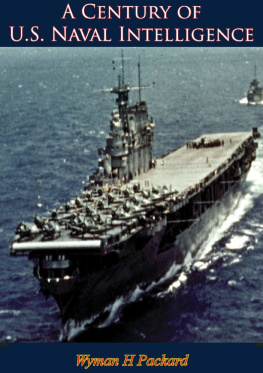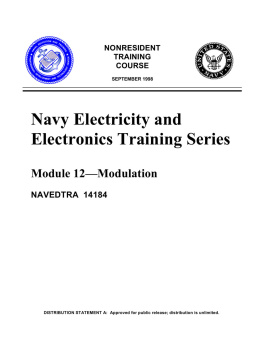NAVAL
INNOVATION
FOR THE 21ST CENTURY


Naval Institute Press
Annapolis, Maryland
Naval Institute Press
291 Wood Road
Annapolis, MD 21402
2013 by Robert Buderi
All rights reserved. No part of this book may be reproduced or utilized in any form or by any means, electronic or mechanical, including photocopying and recording, or by any information storage and retrieval system, without permission in writing from the publisher.
Library of Congress Cataloging-in-Publication Data
Buderi, Robert.
Naval innovation for the 21st century : the Office of Naval Research in the post-Cold War era / Robert Buderi.
1 online resource.
Summary: The Office of Naval Research, known widely as ONR, was formed in 1946 largely to support the pursuit of basic science to help ensure future U.S. naval dominanceand as such, it set the model for the subsequently created National Science Foundation. But everything changed after the Cold War. The U.S. entered a period of greater fiscal constraints and the concept of warfare shifted from conventional land and sea battles and super-power conflicts to an era of asymmetric warfare, where the country might be engaged in many smaller fights in unconventional arenas. Naval Innovation is a narrative account of ONRs efforts to respond to this transformation amidst increasing pressure to focus on programs directly relevant to the Navy, but without sacrificing the seed corn of fundamental science the organization helped pioneer. Told through the eyes of the admirals leading ONR and the department heads who oversee key programs, the book follows the organization as it responds to the fall of the Soviet Union, the terrorist attack on the USS Cole in 2000, and subsequent wars in Iraq and Afghanistan. These events are inspiring an array of innovations, for land and sea. Consider unmanned undersea vehicles that can patrol strategic coastlines for months on end, novel types of landing craft that can travel up to 2,500 nautical miles without refueling, and precision shipborne rail guns whose GPS-guided shells can hit targets from hundreds of miles off. Other efforts include advanced electronics designed to swap out scores of antennas on ships for two solid-state apertures, greatly increasing speed and stealth and speed; virtual training methods that spare the environment by avoid the need to fire tons of live shells, and new ways to protect Marines from improvised explosive devices. All these programs, some pursued in conventional manner and some set up as skunk works designed to spur out-of-the-box thinking, are part of an ongoing evolution that seeks to connect scientific investment more directly to the warfighter without forsaking the Navys longer-term future. Naval Innovation is a narrative history, and a story of organizational change, centered around the struggles of management and key personnel to adapt to shifting priorities while holding on to their historic core mission of supporting longer-term research. As such, it holds great lessons and insights for how the U.S. government should fund and maintain military R&D in a new era of small ball conflictsand how the country must prepare for the future of warfare. Provided by publisher.
Includes bibliographical references and index.
Description based on print version record and CIP data provided by publisher; resource not viewed.
ISBN 978-1-61251-514-4 (ebooks) 1. United States. Office of Naval ResearchHistory. 2. Naval researchUnited StatesHistory. 3. Naval art and scienceTechnological innovationsUnited States. I. Title. II. Title: Office of Naval Research in the post-Cold War era.
V394.O34
359.070973dc23
2013032222
 Print editions meet the requirements of ANSI/NISO z39.48-1992 (Permanence of Paper).
Print editions meet the requirements of ANSI/NISO z39.48-1992 (Permanence of Paper).
21 20 19 18 17 16 15 14 13 9 8 7 6 5 4 3 2 1
First printing
CONTENTS
PHOTOS
TABLE
FIGURE
SIDEBARS
The technology that enabled U.S. Navy SEALs and their other service colleagues to safely and effectively deliver justice to terroristsespecially Osama bin Ladenone day will be known to the public. When it is revealed, the contribution of sustained research in science and technology and the critical investment in American innovation that are the hallmarks of the ONR will be recognized as a vital factor in Americas military and economic successes.
This book captures the challenge that the nation and the U.S. Navy face in balancing basic university and laboratory discoveries, which provide fuel for the engines that power our economy and security in the future, with the need to deliver real-world, cutting-edge technology and capabilities to our sailors and Marines who are in harms way today. Robert Buderi has skillfully captured that tension in what is arguably one of the most successful sponsors of research and resultsONRas it transitioned from a relatively stable, forty-five-year Cold War footing to the more agile, full-spectrum science and technology organization that discovers and delivers game-changing and life-saving capability to warfighters when and where they need it to be victorious in combat.
This is this story of ONR moving from its Naval Science Foundation roots dating back to 1946 to the Office of Naval Relevance today. Although it focuses on ONRs organizational history during the post-Cold War era from 1990 through early 2007, it concludes with profiles of some of the potentially game-changing programs that will likely endure well into the twenty-first century and shape the future of naval warfare. The transformation Buderi describes is filled with drama, intrigue, missteps, and successes like few other government agencies have experienced. With this books commissioning, it is the hope of all, but especially the postCold War Chiefs of Naval Research and dedicated civilian and military scientific leadership, that officers, Sailors, Marines, policymakers, researchers, entrepreneurs, and industrialists will better understand that technology transition is a creative contact sport not for the timid.
The continuum of basic research through successful prototype demonstrationdiscovery to deploymentis why Congress continues its strong support of ONR and its dedicated government and civilian researchers, program managers, and partners.
Human nature changes slowly, institutional intrigue is a fact of life, and budget priorities are forever in flux. Fifty and even one hundred years from now, when the Secretary of the Navy, Chief of Naval Operations, Commandant of the Marine Corps or Chief of Naval Research contemplate what the role of ONR should be for the twenty-second-century Navy, this book may well offer valuable insights into how mission success can be achieved.
Rear Adm. Jay M. Cohen, USN (Ret.)
Chief of Naval Research, 20002006
This book could not have happened without the vision and support of Rear Adm. Jay Cohen, USN (Ret.). I first met Jay sometime in 2000, when he was Chief of Naval Research. He invited me to the Office of Naval Research (ONR) to give a lunchtime talk about my recently released book Engines of Tomorrow, which chronicles the history of industrial research and the way modern companies are struggling to adapt their research operations to modern, globally competitive times. The admiral, still new to his job, was keenly interested in how corporations managed research and development (R&D): after all, he had the same job for the Navy and faced many of the same pressures.
Next page








 Print editions meet the requirements of ANSI/NISO z39.48-1992 (Permanence of Paper).
Print editions meet the requirements of ANSI/NISO z39.48-1992 (Permanence of Paper).